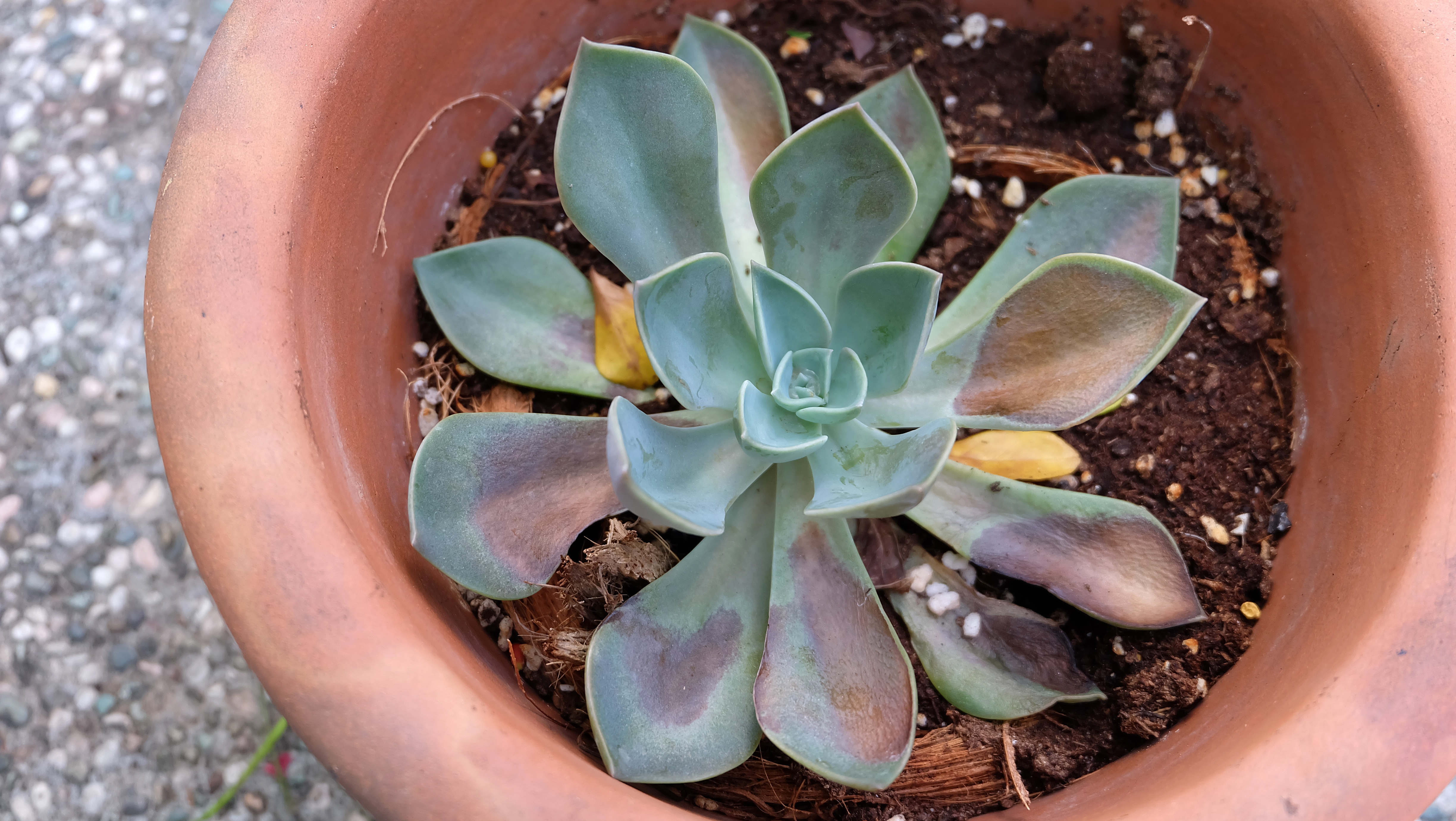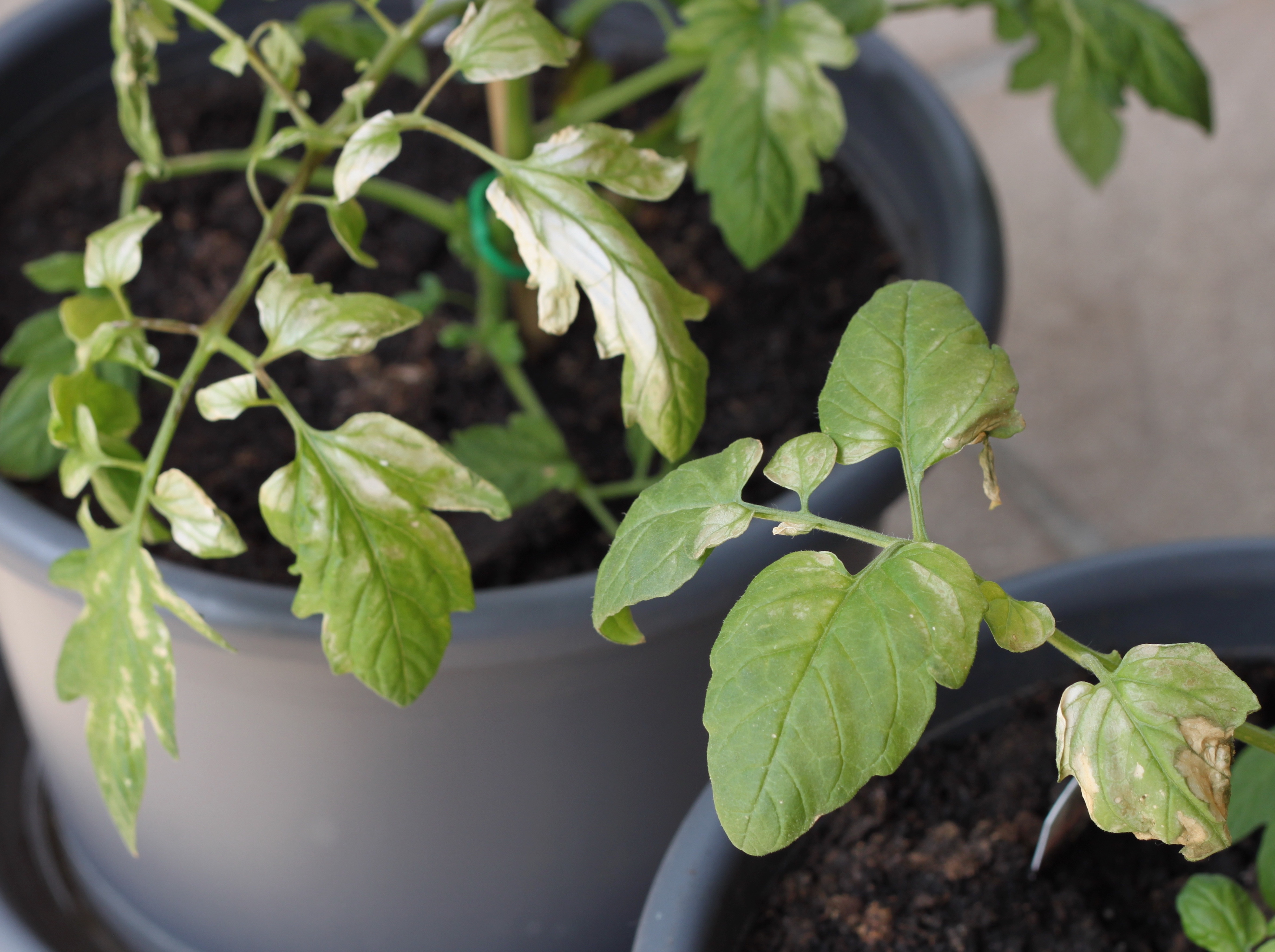Why is this happening?
Many house plants can be acclimated to very sunny spaces in your home, but others grow better in less direct light. Some are more sensitive than others so keep an eye on your plants for symptoms of sun stress— especially when the seasons are changing and daylight hours are increased.
Symptoms
Fading and washed-out colors on the leaves
Burnt spots
Droopy leaves
Dry leaf edges or fully dry leaves

What to do now
Move your plant to a sheltered spot or provide some shade for your plant. Moving your plant to a drastically darker location can cause shock and even more damage.
You'll need to make sure you're acclimating your plants to increased light exposure before you place them there permanently. This is common when moving your plants from indoors to outdoors. Even plants that can tolerate lots of direct sunlight, like cacti and succulents can get shocked and even burned by excessive or sudden sun exposure. It's not always the sunlight alone but it could also be a change in temperature and the wind dehydrating the plant faster.
You may need to reassess where you keep your plants so that they can best thrive in their environment.
In order to make sure that your plant is suitable for the location that it is currently in, you can check the light conditions of that site using the Light Meter.
How to use the light meter
By using Planta’s Light Meter to measure the light conditions of each of your sites, you can make sure that your plants are placed in a suitable location for their needs.
Open Planta > enter the site you want to measure > settings in the right corner > Light > and enter the light Meter
For best results, you should measure the light at 12:00 noon
Position your device’s camera as close as possible to where you intend to place your plant
Point the camera towards the window (or other main light source)
Try to keep your device straight and not tilted
The light ‘types’ range from Dark, Shade, Part Sun, to Full Sun
If it’s an unusually bright day, it may be better to wait until a more ‘average’ weather day in order to best represent the typical light conditions

Common questions
I don't want to move my plant, can I shelter it instead?
If you’re worried about your plant getting too much sun but don’t want (or can’t) move it, you can consider covering it instead. Use a lightweight material such as burlap or purchase some semi-transparent garden netting or row covers- these are designed to protect your plant without touching it, which may interfere with its growth. You could also strategically place more sensitive plants next to taller, more light tolerant plants, providing them with a natural place to shelter from direct light. Just make sure the taller plants have a wide enough spread to cover the plant you want to shelter.
How do I know how much light my plant needs?
Check the light recommendations in Planta. Many plants prefer bright, indirect light (part sun, part shade), but not all - this greatly depends on the type of plant. You can find information about each plant’s light needs by tapping on the ‘Info’ tab.
Will the mark on the plants go away?
Burn marks on the leaves will unfortunately never go away.